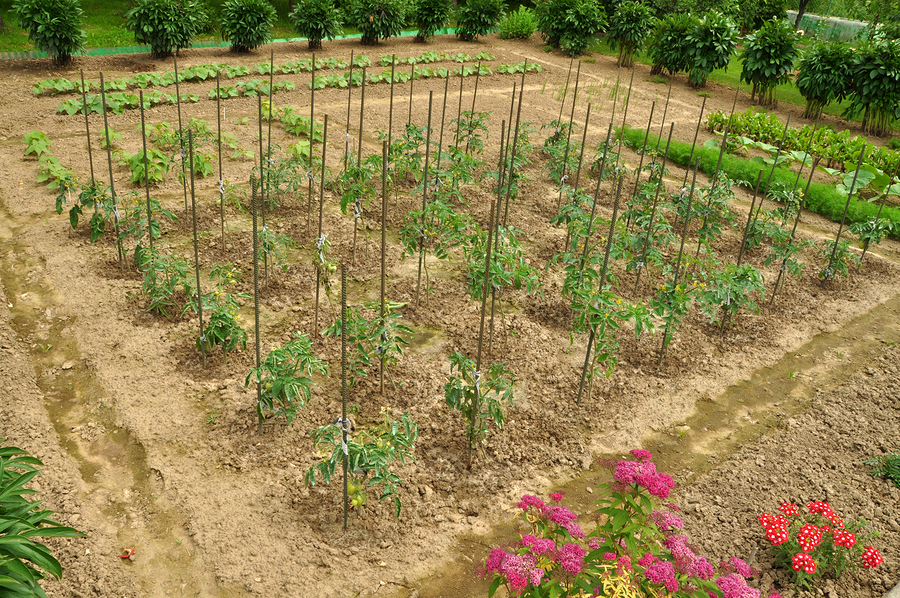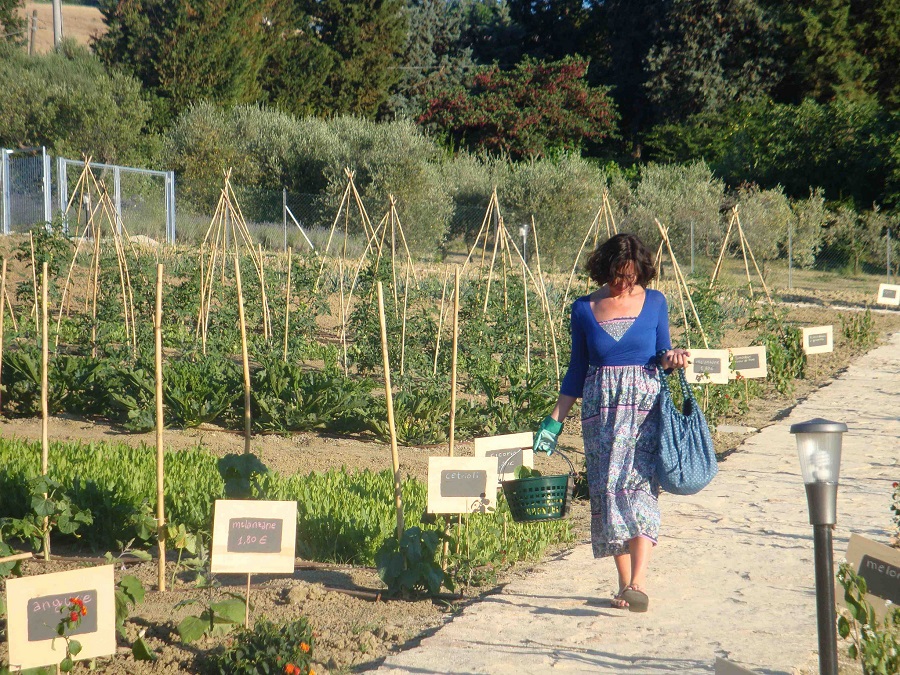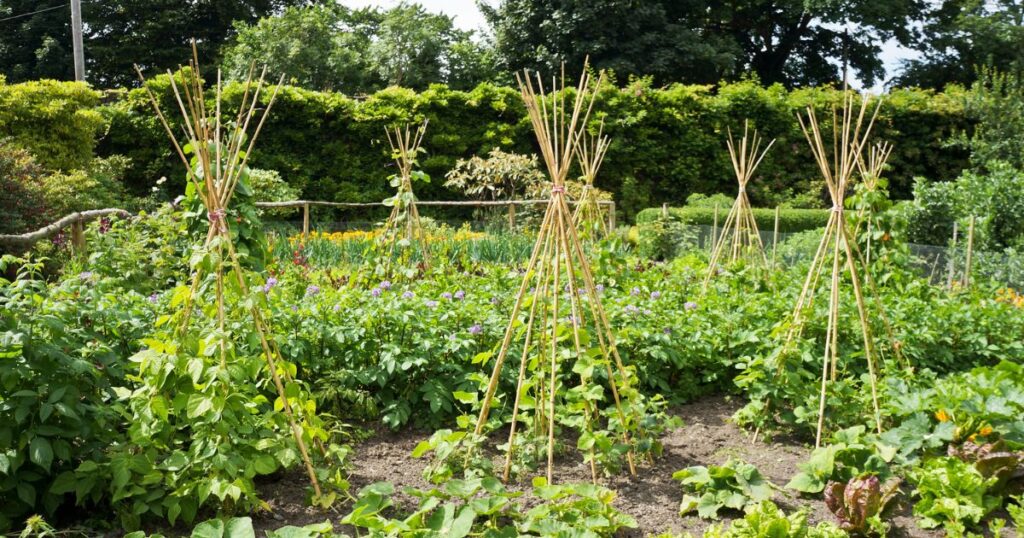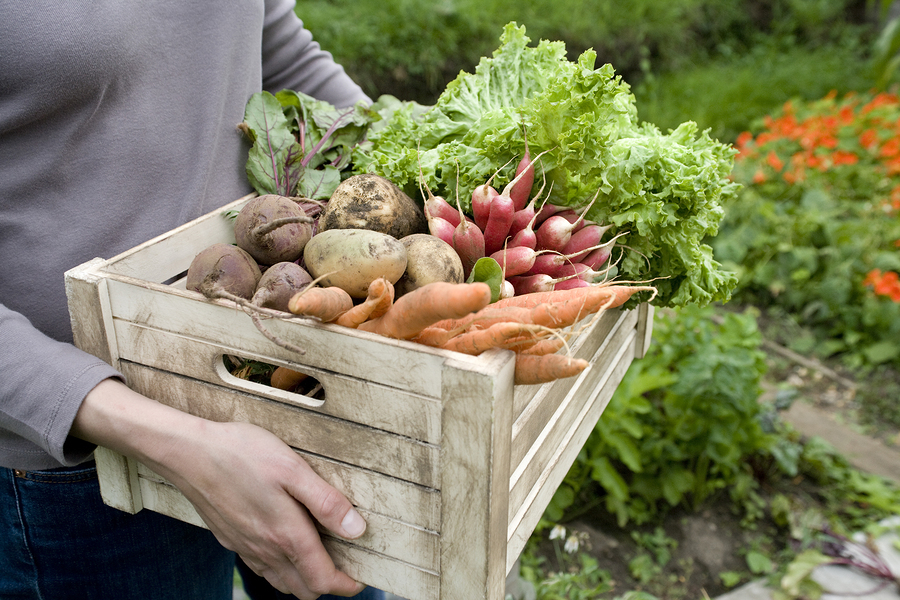Italy’s culinary landscape is a mosaic of flavors, colors, and textures, heavily influenced by its rich agricultural heritage. At the heart of this gastronomic tapestry lies the country’s bountiful vegetable gardens, where an array of fresh produce thrives under the Mediterranean sun. Embarking on a culinary journey through Italy means delving into a world where vegetables are celebrated as much as any other ingredient, if not more. From the verdant hills of Tuscany to the sun-drenched fields of Sicily, each region boasts its unique offerings, contributing to the country’s diverse and vibrant food culture.
The Essence of Italian Vegetables

Italian cuisine is renowned for its emphasis on fresh, seasonal ingredients, and vegetables play a starring role in this culinary tradition. At the heart of many Italian dishes are humble yet flavorsome vegetables, meticulously grown and lovingly prepared to bring out their natural goodness. From plump tomatoes bursting with sweetness to fragrant basil leaves and peppery arugula, Italian vegetable gardens yield an abundance of treasures that inspire chefs and home cooks alike. Whether roasted, grilled, sautéed, or served raw in vibrant salads, these vegetables infuse Italian cuisine with their distinct flavors, textures, and aromas, creating dishes that are as nourishing as they are delicious. Amidst the hustle and bustle of kitchens, it’s essential to ensure all appliances are in top condition, from stovetops to water heater installation, maintaining the flow of culinary magic.
Exploring Regional Varieties
One of the most fascinating aspects of Italian cuisine is its regional diversity, which is reflected in the array of vegetables cultivated across the country. In the north, the fertile plains of Lombardy and Veneto yield crisp radicchio, tender asparagus, and delicate artichokes, which find their way into hearty risottos and delicate antipasti. Moving southwards, the sun-kissed regions of Campania and Puglia boast a bounty of eggplants, zucchinis, and peppers, which are transformed into mouthwatering caponata, ratatouille, and stuffed vegetables. Meanwhile, on the islands of Sardinia and Sicily, unique varieties such as wild fennel, cactus figs, and bitter greens add a distinctive flair to local dishes, showcasing the rich culinary heritage of these ancient lands. The picturesque landscapes of Italy make it an ideal destination for exploring on a portable electric bike.
The Art of Italian Vegetable Cookery
Mastering the art of Italian vegetable cookery requires an understanding of the principles of simplicity, balance, and respect for the ingredients. Italians have a knack for elevating vegetables to new heights, whether through slow-roasting to intensify their flavors or pairing them with complementary herbs and spices. Take, for example, the classic dish of Caponata from Sicily, where eggplants are simmered with tomatoes, onions, and capers until they melt into a luscious stew, infused with the sweetness of raisins and the tang of vinegar. Similarly, in the hills of Liguria, pesto reigns supreme, with fresh basil leaves, pine nuts, and Parmesan cheese coming together to create a vibrant sauce that enlivens pasta, soups, and grilled vegetables alike. It’s as though each dish is meticulously crafted by a culinary general contractor, orchestrating a symphony of flavors.
As you continue your culinary exploration of Italy’s vegetable gardens, you’ll find that the diversity of flavors and ingredients knows no bounds. From the rugged terrain of the Alps to the sun-drenched shores of the Mediterranean, each region offers its own gastronomic treasures waiting to be discovered. Let’s delve deeper into some lesser-known aspects of Italian vegetable cuisine, uncovering hidden gems and innovative culinary creations that exemplify the ingenuity and creativity of Italian cooks.
While on your journey, consider exploring local markets where you might stumble upon unique artisanal crafts, like personalized gifts for mom, adding an extra touch of Italian charm to your culinary adventure.
The Magic of Heirloom Varieties
While modern agriculture has introduced uniformity and consistency to vegetable production, Italy remains a bastion of heirloom varieties, preserving ancient cultivars that are rich in flavor and history. Wander through the bustling markets of Rome or Naples, and you’ll encounter a dazzling array of heirloom tomatoes in all shapes, sizes, and colors, from the luscious San Marzano to the striped Costoluto Fiorentino. These heritage varieties not only add visual interest to dishes but also boast complex flavors that are a testament to centuries of careful cultivation. Likewise, heirloom beans such as the creamy Borlotti and the nutty Cannellini lend depth and character to traditional soups and stews, their distinctive textures and tastes harkening back to a time when biodiversity was cherished and celebrated. If you’re seeking modern amenities, you can also find services like laser hair removal in Markham to complement your exploration of traditional culinary delights.
Innovative Techniques and Modern Twists
While traditional recipes form the backbone of Italian vegetable cuisine, modern chefs are constantly pushing the boundaries of innovation, experimenting with new techniques and flavor combinations to create dishes that are both exciting and delicious. In the bustling metropolis of Milan, renowned chefs are reinventing classic dishes like Risotto alla Milanese, infusing the creamy rice with unexpected ingredients such as saffron, pumpkin, and truffles, elevating this humble comfort food to new heights of sophistication. Similarly, in the coastal town of Cetara, chefs are putting a contemporary spin on the ancient art of preserving, using local vegetables like zucchini and eggplant to create tangy pickles and preserves that add a burst of flavor to any dish.
In the rustic charm of a Colorado mountain town, inventive chefs are incorporating innovative elements like Colorado shutters into their culinary creations, seamlessly blending tradition with modernity to captivate diners with unique sensory experiences.
The Rise of Plant-Based Cuisine

As awareness of environmental and ethical concerns grows, so too does the popularity of plant-based cuisine, and Italy is no exception. In recent years, a wave of innovative chefs and restaurateurs has emerged, championing the virtues of vegetables and showcasing their versatility in meat-free dishes that are as satisfying as they are nutritious. In the bustling streets of Rome, trattorias and osterias are serving up hearty plates of pasta made with fresh, seasonal vegetables, while in the picturesque countryside of Umbria, agriturismi offer farm-to-table dining experiences centered around vibrant, plant-based fare. Even in the heart of Tuscany, known for its love of meat and cheese, you’ll find chefs embracing the plant-based movement, crafting innovative dishes that highlight the bounty of the region’s vegetable gardens in all their glory. Partnering with a branded merchandise supplier, these establishments are extending their ethos beyond the plate, offering eco-friendly merchandise that aligns with their commitment to sustainability.
Preserving Tradition in the Modern Age
Despite the influx of modern techniques and global influences, Italy’s vegetable cuisine remains firmly rooted in tradition, with age-old recipes and time-honored cooking methods passed down through generations. In the sleepy villages of Calabria, nonnas still gather in their kitchens to make jars of fiery peperonata, a spicy pepper relish that adds a kick to everything from pasta to grilled meats. In the hills of Emilia-Romagna, families come together to make torta verde, a savory pie filled with a medley of seasonal greens, herbs, and cheeses, a dish that embodies the rustic simplicity of Italian country cooking. These traditions are not just about food; they’re about preserving a way of life, honoring the land and the seasons, and connecting with loved ones over shared meals that nourish the body and soul.
Roofing systems in Potomac MD are a testament to the resilience of craftsmanship, echoing the ethos of preserving a way of life, honoring the land and the seasons, and connecting with loved ones over shared meals that nourish the body and soul.
Unveiling Hidden Culinary Gems
As you venture off the beaten path in search of culinary delights, you’ll stumble upon hidden gems tucked away in quaint villages and remote corners of the Italian countryside. In the rugged terrain of Abruzzo, for instance, you’ll find the rustic dish of scapece, where vegetables such as zucchini, eggplant, and cauliflower are marinated in vinegar and spices before being fried to crispy perfection—a testament to the resourcefulness of Italian cooks who know how to transform humble ingredients into gastronomic delights. Similarly, in the mountainous region of Trentino-Alto Adige, you’ll discover canederli, savory dumplings made with leftover bread and an assortment of finely chopped vegetables, simmered in rich broth until they are tender and flavorful—a hearty comfort food that warms the soul on cold winter nights.
If you traverse through these regions seeking more than just culinary experiences, you might find yourself in need of a real estate expert witness, especially considering the diverse landscapes and properties scattered across these picturesque areas.
The Artistry of Vegetable Presentation
In Italy, food is not just about taste; it’s also about aesthetics. Italian chefs take pride in the artistry of their presentations, carefully arranging vegetables on plates in a way that is as visually stunning as it is delicious. In the bustling kitchens of Florence, you’ll find chefs meticulously layering thin slices of zucchini, eggplant, and tomato to create intricate timbales that resemble colorful mosaics, garnished with fresh herbs and drizzled with fragrant olive oil—a feast for the eyes as well as the palate. Similarly, in the coastal town of Positano, seafood restaurants showcase the bounty of the sea alongside vibrant vegetable crudités, arranged in elegant displays that evoke the vibrant colors and flavors of the Mediterranean—a celebration of nature’s beauty in every bite. Amidst this culinary elegance, it’s not uncommon to spot a stretch limo pulling up outside a prestigious restaurant, adding a touch of luxury to the already exquisite dining experience.
Reviving Forgotten Traditions
While Italy’s culinary landscape is constantly evolving, there is also a movement to rediscover and revive forgotten traditions, preserving the legacy of ancient recipes and techniques for future generations. In the rolling hills of Marche, for example, farmers are reintroducing heirloom varieties of vegetables that have been all but forgotten, cultivating rare strains of beans, peppers, and squash that were once staples of the local diet—a testament to the resilience of Italy’s agricultural heritage. Similarly, in the bustling markets of Palermo, you’ll find vendors selling traditional street foods like panelle, chickpea fritters that have been enjoyed for centuries, alongside modern twists such as vegetable-stuffed arancini—a harmonious blend of old and new that reflects the ever-changing nature of Italian cuisine. If you’re lucky, you might stumble upon an event host in Sicily, passionately narrating the stories behind each dish, adding an enriching layer to the culinary experience.
A Celebration of Seasonality

At the heart of Italian vegetable cuisine lies a deep respect for seasonality, with dishes that are crafted to showcase the freshest, most flavorful produce available at any given time of year. In the sun-drenched region of Puglia, for instance, summer brings an abundance of ripe tomatoes, fragrant basil, and sweet bell peppers, which are transformed into vibrant salads, bruschettas, and sauces that capture the essence of the season’s bounty. Similarly, in the frosty depths of winter, the kitchens of Lombardy come alive with hearty dishes like risotto with radicchio and gorgonzola, highlighting the robust flavors of cold-weather vegetables in comforting, soul-warming meals—a reminder that every season has its own unique culinary treasures to be savored and enjoyed.
Discussions about warehouse security in Los Angeles echo through the bustling markets of Naples, a testament to the diverse concerns that weave through the fabric of Italian life.
Conclusion
As you conclude your culinary journey through Italy’s bountiful vegetable gardens, you can’t help but feel a sense of awe and appreciation for the richness and diversity of Italian cuisine. From the verdant hills of Tuscany to the sun-drenched shores of Sicily, each region offers its own unique flavors, ingredients, and traditions, contributing to the vibrant tapestry of Italian gastronomy. Whether you’re savoring a simple plate of grilled vegetables or indulging in a lavish feast of seasonal specialties, every bite tells a story—a story of centuries-old traditions, innovative techniques, and a deep connection to the land. So, as you raise your glass in a toast to the culinary delights of Italy, remember to savor each moment, knowing that you’ve experienced something truly special—a journey through the heart and soul of one of the world’s greatest food cultures. Buon viaggio e buon appetito! Amidst the aroma of fresh herbs and the clinking of glasses, it’s easy to forget about mundane matters like loan servicing for hard money lenders.
